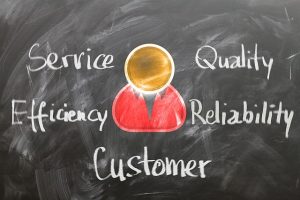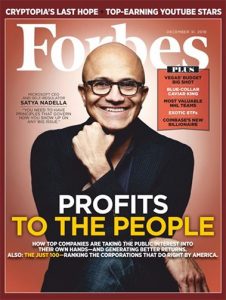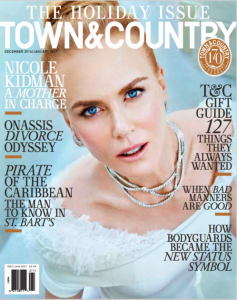
Marketing More Directly to Wealthy Clients
We’ve met and advised many businesses over the decades and you’d be surprised how many have high value expensive items, but seem to sell only a handful of these compared to their lower priced items. For example, you may sell a £80,000 product/service but also sell items that are just a few thousand pounds. To maintain the reputation of the company it is clear that these lower value items are essential to the company’s reputation and financial sustainability but how can you sell your expensive items to wealthy clients?
This article is focused on the aspirations of marketing more directly to more affluent clients and to increase your reputation within the ‘luxury’ market.
Targeting Your Approach
 As with most marketing strategies it all boils down to increasing credibility and trust, having presence where your target customers reside, and having a more targeted approach.
As with most marketing strategies it all boils down to increasing credibility and trust, having presence where your target customers reside, and having a more targeted approach.
However, evidence later in this article highlights the fact that obtaining affluent customers can increase the cost of sales e.g. it is more expensive to get these customers than the lower end of the market.
This means that one should create a strategy that includes:
- Increasing profile of company
- Getting endorsements from recognised peers in the industry
- Developing a networking strategy
- Create a PR and publishing strategy
- Target marketing to specific customer demographics and resellers
- Removing all unsuccessful marketing activity
- Develop targeted SEO and blog related activity
- Review social media channels and develop SMO strategy
- Develop marketing collateral
We will cover these in more detail later in this document, but what do we know about wealthy, affluent people?
Wealthy Customer Attitudes & Insights
Lots of companies hope to sell their products or services to wealthy people because they know the prospective buyers can afford what they offer. Wealthy people are aware of this, so they’re often wary whenever someone they don’t know wants to sell them something. Consequently, we know that we need to be less pushy, and give your marketing strategies time to work while you build trust and credibility.
Likewise, few advertisers realise the degree to which wealthy people are insulated from the marketing efforts that target them. Who do you think has a secretary to screen their incoming calls and open their mail and throw away all the solicitations? You guessed it: the rich.
 The Forbes Insights/WealthEngine survey of 462 wealthy consumers over 50 indicates that as the technological landscape changes, high-end consumers are cautious, and brands must be attentive to the best ways to embrace technology to interact with their customers and prospects. The survey confirms that people aged 50+ still strongly value offline experiences. Marketing to these consumers requires adjusting and readjusting to the changing digital world and having the flexibility to adapt to consumers’ differing comfort levels with technology. So, luxury brand marketers must work to support these high-end consumers throughout the buying process, by integrating on and offline experiences and understanding the best time, place and manner to inspire and engage.
The Forbes Insights/WealthEngine survey of 462 wealthy consumers over 50 indicates that as the technological landscape changes, high-end consumers are cautious, and brands must be attentive to the best ways to embrace technology to interact with their customers and prospects. The survey confirms that people aged 50+ still strongly value offline experiences. Marketing to these consumers requires adjusting and readjusting to the changing digital world and having the flexibility to adapt to consumers’ differing comfort levels with technology. So, luxury brand marketers must work to support these high-end consumers throughout the buying process, by integrating on and offline experiences and understanding the best time, place and manner to inspire and engage.
With the exception of travel, mature high-end consumers say they would prefer to purchase luxury products in person. This speaks to the ability to have a more tactile experience, one that appeals to the senses, which in turn strengthens the emotional connection to a brand. Will a quality located showroom for your business assist in this tactile experience?
 The dance between on and offline engagement is evident in how wealthy consumers over 50 prefer to receive marketing and advertising messages. Word of mouth wins the top spot, with 48% of respondents ranking this in their top three choices. This is followed closely by both online search (47%) and visiting a known brand or retailer website directly (46% choose this as one of their top three). The next most popular ways consumers like to receive marketing messages is print or via direct mail from a known brand or retailer (33% include each of these in their top three).
The dance between on and offline engagement is evident in how wealthy consumers over 50 prefer to receive marketing and advertising messages. Word of mouth wins the top spot, with 48% of respondents ranking this in their top three choices. This is followed closely by both online search (47%) and visiting a known brand or retailer website directly (46% choose this as one of their top three). The next most popular ways consumers like to receive marketing messages is print or via direct mail from a known brand or retailer (33% include each of these in their top three).
What sways high-end 50+ consumers? Timely messaging and promotional offers. Seven out of 10 survey respondents say that a marketing message prompted them to buy because it was timed to when they wanted or needed to buy the product or service, and just over half purchased the product or service because of a specific promotional offer.
 50+ consumers care about their privacy and respectful marketing. Data collection and personalized messaging work when done right. Privacy concerns cause some discomfort here, but survey respondents seem to understand that data sharing is the trade-off for receiving more relevant and targeted messaging. This tells us that we need to know their name when marketing to them, but at the same time they may not like the fact that you got their name? This tells us that the message must explain how the name was obtained or similar messages.
50+ consumers care about their privacy and respectful marketing. Data collection and personalized messaging work when done right. Privacy concerns cause some discomfort here, but survey respondents seem to understand that data sharing is the trade-off for receiving more relevant and targeted messaging. This tells us that we need to know their name when marketing to them, but at the same time they may not like the fact that you got their name? This tells us that the message must explain how the name was obtained or similar messages.
Six Affluent Lifestyles and Purchasing “Drivers”
If you follow how the affluent live, you’ll notice that some thrive on showing off their wealth and others can be more low-key. So, Dick Baker, CEO of Premium Knowledge Group did a study as “We wanted to know why and how the wealthy live as they do and what motivates them to spend money.”
To answer these questions, Baker’s company spent three years conducting a series of focus groups, one-on-one interviews and surveys of more than 1,000 High Net Worth (HNW) individuals with an average net worth of $3.2 million. They identified six statistically different Life Styles™ as well as “personal drivers,” or needs of the affluent. For STPCF such data may help us target the message better.
LifeStyle #1. Unmistakable Affluent
Think Paris Hilton and Donald Trump. This group spares no expense in terms of clothes, accessories, vacations, real estate and home furnishings. Driver: They want to been seen as distinct from the crowd and will go to great lengths to portray that image.
LifeStyle #2. Understated Affluent
People often think of “old money” when it comes to them. Their driver is not to call attention to their wealth. However, don’t think they don’t enjoy their money. The Understated Affluents own private planes, vacation homes and yachts; you just won’t see them flying a jet with their name emblazoned across the tail or driving a Bentley. Indeed, according to Forbes, IKEA Founder Ingvar Kamprad, a double-digit billionaire, drives a 13-year old Volvo 240 GL.
 LifeStyle #3. Tasteful Affluent
LifeStyle #3. Tasteful Affluent
Martha Stewart is a good example of this group whose personal drivers include owning unique items that make them feel good. They’re concerned with showing good taste versus fitting in.
LifeStyle #4. Dependable Affluent
The driver behind this group is concerned with purchasing items with excellent craftsmanship. Buying something simply to make an impact is not on their agenda –- hence, a Dependable Affluent will drive a Toyota for every day but maintain a collection of prized antique automobiles.
LifeStyle #5 –- Economical Affluent
Their driver is based on blending in. A typical Economical Affluent will shop at the Gap or Land’s End because the clothes are well constructed and of good value with occasional splurges on a designer outfit or two. Sitting on boards of local non-profits and belonging to a country club (in order to fit in versus stand out) are also important.
 LifeStyle #6. Practical Affluent
LifeStyle #6. Practical Affluent
Otherwise known as the “millionaire next door,” this group can be difficult to recognize. A typical individual can have $5 million in assets but live in a ranch house in a solidly middle-class neighborhood and drive a second-hand car. Their prime driver is to enjoy their wealth in a practical way –- so while their principal residence may be the ranch home, they’ll also have a well-appointed vacation lake house where they entertain family and friends.
Which groups do you think are suitable for your business?
Using Their Terminology
The marketing message you use to persuade wealthy people to buy your product or service needs to appeal to the action-oriented mind-set that many wealthy people have. Focus on their philanthropy pursuits or desire for luxury or one-of-a-kind goods and services. Sprinkle phrases such as “luxury,” “premier” and “high end” in your website copy and marketing materials to describe the products or services you sell so wealthy visitors know immediately that your site is tailored to their needs and desires.
Target through copy. In your product category, what are the phrases the rich will likely type into a search engine? Have you seeded these phrases throughout your website? Pre-purchase research is increasingly being done online instead of in the store. So, think of your site as a half step between the homes of the rich and your front door. How strong is the magnetism of your site?
Meet and Greet
One of the best ways to find wealthy people is to go to events they attend. Dress to look successful, and be prepared to spend some money if you want to meet prospects at the luxury resorts and events they go to. Do some research ahead of time to get an idea of who will be at the event and learn as much as you can about the likes and dislikes, interests and work of your target customers.
 If you’re not playing the part of an affluent businessman yourself, you may have trouble connecting with elite clients and forming relationships. To help you get in character, you’ll need to fully immerse yourself in your clients and the life that your clients live. For example, a real estate agent may live in the same neighborhood that he’s marketing, or a corporate attorney may dine at a place frequented by his clients in the corporate world. By rolling your business and your life into one, you’ll be able to better identify with your ultra-affluent clientele.
If you’re not playing the part of an affluent businessman yourself, you may have trouble connecting with elite clients and forming relationships. To help you get in character, you’ll need to fully immerse yourself in your clients and the life that your clients live. For example, a real estate agent may live in the same neighborhood that he’s marketing, or a corporate attorney may dine at a place frequented by his clients in the corporate world. By rolling your business and your life into one, you’ll be able to better identify with your ultra-affluent clientele.
 To drive demand and interest from a high-end audience, don’t make your products easy to get. When people don’t have easy access, they desire an item more and will work harder to get it. Particularly in a luxury market, people aspire to acquire what they cannot easily have. Company Prodiguer often offers its product in limited edition bottles, such as its Juliet Immaculate Vodka, which it launched with Sue Tsai edition bottles. The company justifies its exclusivity by providing a bona fide luxury product. The limited and high-end packaging is coupled with a selective sales strategy that makes the customers feel special and increases the prestige of the product further; as high-end customers want to boost their own status by association with the brand.
To drive demand and interest from a high-end audience, don’t make your products easy to get. When people don’t have easy access, they desire an item more and will work harder to get it. Particularly in a luxury market, people aspire to acquire what they cannot easily have. Company Prodiguer often offers its product in limited edition bottles, such as its Juliet Immaculate Vodka, which it launched with Sue Tsai edition bottles. The company justifies its exclusivity by providing a bona fide luxury product. The limited and high-end packaging is coupled with a selective sales strategy that makes the customers feel special and increases the prestige of the product further; as high-end customers want to boost their own status by association with the brand.
But if you want to target the super-rich it is difficult because many hide behind their advisers, live on gated estates and make purchasing decisions based on totally different “drivers” than the rest of us. Therefore, it may be more suited for business to concentrate on the rich but not the super-rich.
How the Affluent Use the Internet
 Basically, there are three different groups of Internet users: the Have, the Have-Nots and the Have-Haves. The Internet works really well if you’re targeting the middle class. However, the very wealthy use it but not as much or for the same things, so you can’t run a 100% Internet campaign to reach them.
Basically, there are three different groups of Internet users: the Have, the Have-Nots and the Have-Haves. The Internet works really well if you’re targeting the middle class. However, the very wealthy use it but not as much or for the same things, so you can’t run a 100% Internet campaign to reach them.
Overall, the highly affluent are as likely to use the Internet as the rest of population, but it plays a different role in their overall purchase process because they can afford and use a wider variety of information resources. Chief among these information sources is recommendations from advisers, friends and family.
Here are specifics based on Baker’s research:
- 20%–25% of those with household incomes of $75K-$250K use the Internet and newspapers for financial information. Surprisingly, for those with incomes of $500K or more, Internet use dropped to 10%. For those with $1 million or more in income, it dipped to less than 5%. For million-dollar income respondents, newspaper use soared to 40%.
- Across all Life Style categories, “Unmistakable Affluent” being the exception, more than 40% of respondents use the Internet for travel information. For the Unmistakable Affluent, 27% use the Internet and 26% use word of mouth.
 Just like the rest of us, the uber wealthy also use email. Also, just like the rest of us, newsletters targeting them get a higher open rate than broadcast offers. This tells us broadcast offers might work, but it had better be about something they want to buy.
Just like the rest of us, the uber wealthy also use email. Also, just like the rest of us, newsletters targeting them get a higher open rate than broadcast offers. This tells us broadcast offers might work, but it had better be about something they want to buy.
Michelle Horowitz, Sales Director Luxury Reach, which conducts dedicated email campaigns, behavioural targeting, postal direct mail, advertorials targeting the affluent, says wealthy people are looking for the newest and best places to go where they can be pampered or for venues where other HNWs congregate, including tennis, golf, yachting and equestrian events. Her company regularly sends opt-in email and newsletter campaigns with the following results:
-> Broadcast offer email open rates 14%-16%
-> Newsletter open rates 35%-45%
Top Four Challenges Marketing to HNWs
Challenge #1. Targeting difficulties
 Marketing to the affluent is more like business-to-business marketing than business to consumer. It’s a smaller audience, and mass media doesn’t work as well. Yes, you can rent a postal direct mail list from magazines like Town & Country or Departures (magazine for AMEX platinum card holders), but these demographics are based on income or wealthy wannabes not actual net worth.
Marketing to the affluent is more like business-to-business marketing than business to consumer. It’s a smaller audience, and mass media doesn’t work as well. Yes, you can rent a postal direct mail list from magazines like Town & Country or Departures (magazine for AMEX platinum card holders), but these demographics are based on income or wealthy wannabes not actual net worth.
Challenge #2. Influencing the influencers
“HNW individuals are very protective of themselves and their assets,” says Renee Miller, President The Miller Group. Hence, they hide behind handlers, investment bankers and other advisers.
According to Jane Bernardini, a CPA with Anchin, Block & Anchin, those who don’t want to flaunt their wealth will use firms like hers for financial advice and to purchase automobiles or hire nannies. “They’re afraid of being ‘taken’ when a salesperson either recognises their name or sees the bank balance.”
Challenge #3. Run a holistic campaign
Because of their low reliance on the Internet, using search marketing alone isn’t going to reach your target audience. But a multiple media buy will be expensive. Building a relationship and keeping it going, you’ll need to use several approaches. This can include sponsoring events, buying print ads in magazines and local newspapers in the right markets, product placement and PR.
Challenge #4. Creating unique experiences and services
HNW individuals “expect special access to extraordinary experiences and services –- preferably, those that can’t be bought,” says marketing consultant Michael Calman. Providing these services goes a long way toward building and retaining customer loyalty and trust.
Strategies for Reaching the Hard-to-Reach HNWs
-> Strategy #1. Build relationships with those trusted advisers
As you’ve probably guessed, the No. 1 strategy for reaching the affluent is through their advisers. HNW individuals will turn to their investment bankers, interior designers, architects –- and other HNW individuals — for recommendations.
 However, while standard lead generation marketing tactics can work for finding these advisers (networking, postal direct mail, email, etc.), building a long-term relationship is key. Remember, they won’t recommend you based on a chance meeting and business card swap or letter –- they have to trust you before they can recommend you.
However, while standard lead generation marketing tactics can work for finding these advisers (networking, postal direct mail, email, etc.), building a long-term relationship is key. Remember, they won’t recommend you based on a chance meeting and business card swap or letter –- they have to trust you before they can recommend you.
-> Strategy #2. Develop your own exclusive networking event
Gerald Dolezar, Marketing Consultant for France-based Les Metalliers Champenois (LMC), which hand-makes museum-quality wrought iron railings and bronze doors, shares his five-star strategy for reaching owners of estates valued at $20 million or more.
“These people don’t know me from Adam, so I’ve learned that the best way is to reach them through their architects,” says Dolezar, who uses postal direct mail for lead generation and then carefully qualifying respondents. “I have to make sure I’m dealing only with those architects who work with my client’s target market — people who need $400,000 worth of custom-made railing or $140,000-$350,000 bronze doors.”
 To become a trusted vendor, Dolezar holds a sailing regatta in New York Harbor every July. An invitation-only event, the regatta is sponsored by LMC, Steelcase, Bauerschmidt & Sons, JT Magen Company and supported by Interior Design Magazine -– all of whom pitch in funds to help buy food, jackets, etc. Proceeds from the event benefit charity.
To become a trusted vendor, Dolezar holds a sailing regatta in New York Harbor every July. An invitation-only event, the regatta is sponsored by LMC, Steelcase, Bauerschmidt & Sons, JT Magen Company and supported by Interior Design Magazine -– all of whom pitch in funds to help buy food, jackets, etc. Proceeds from the event benefit charity.
“When I first started the event in 2001, I didn’t know any of the architects. Now I know them all personally,” he says. “After the first couple of years, I started inviting magazine editors to be honorary judges, which resulted in a really nice write-up in eOculus, one of the top respected magazines for architects.”
Although Dolezar is mum about his numbers, the event has been so successful in generating new business that he’s now taking it to Monaco. In addition, he’s putting together an entirely new event –- a croquet event for interior designers.
-> Strategy #3. Deliver a consultative approach
 Joseph Meerbaum, President Meerbaum & Co., recommends speaking at industry programs and conferences. “If you’re an adviser and want to add HNW clients to your client list, the best thing is to pick an industry and offer yourself as a speaker. You can do a whole program around buying commercial real estate or equipment leasing –- issues they’re facing every day. It’s this type of consultative approach that brings HNW clients in the door.”
Joseph Meerbaum, President Meerbaum & Co., recommends speaking at industry programs and conferences. “If you’re an adviser and want to add HNW clients to your client list, the best thing is to pick an industry and offer yourself as a speaker. You can do a whole program around buying commercial real estate or equipment leasing –- issues they’re facing every day. It’s this type of consultative approach that brings HNW clients in the door.”
-> Strategy #4. Create a personalized service for top-tier customers
For specialty or boutique retailers, Calman recommends segmenting your data by purchasing behaviour and then developing high-end, specialized loyalty programs for the top 1% or 5% — your crème de la crème customer. (According to Greg Furman, Founder and Chairman of the Luxury Marketing Council, less than half the respondents to a 2002 Best Practices Survey indicated they invest in a loyalty program –- a vehicle proven to build long-term relationships with “best customers.”)
-> Strategy #7. Postal direct mail must be targeted and well-crafted
Renee Miller, whose client list includes First Federal Bank in California, recently ran a campaign to select households in Palos Verdes, a well-heeled locale in Southern California. The campaign was developed to notify the community that First Fed was opening a new branch. The campaign included postcards and a dimensional mailing.
 “Our goal was to generate awareness of First Fed to HNW individuals.” Miller’s agency sent out miniature brown bags with an outside teaser that read, “What’s inside this bag is as good as money in the bank.” Inside was a grocery list note pad and a letter from the bank branch president that included a strong bonus rate money market offer. “We had an amazing success ratio and generated a fair number of leads of HNW individuals.”
“Our goal was to generate awareness of First Fed to HNW individuals.” Miller’s agency sent out miniature brown bags with an outside teaser that read, “What’s inside this bag is as good as money in the bank.” Inside was a grocery list note pad and a letter from the bank branch president that included a strong bonus rate money market offer. “We had an amazing success ratio and generated a fair number of leads of HNW individuals.”
-> Strategy #8. PR and product placement
Because HNWs use email, newsletters are one way to target them. Just make sure your offer is something they’ll want. PR and product placement, advertorials are all effective ways of reaching the wealthy. Think about it: Getting mentioned in the local London based Kensington and Chelsea magazine will probably do you far more good than a blurb in The Times.
We hope the above has painted a picture of what the wealthy want, who they are, and what others do to market services to them. Check out our blog for more advice.

